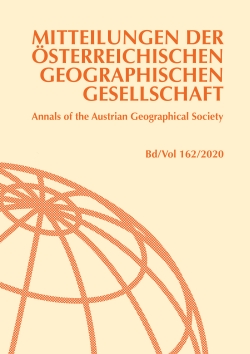
Mitteilungen der Österreichischen Geographischen Gesellschaft Band 162/2020, pp. 123-154, 2021/03/30
Band 162 (Jahresband), Wien 2020
Volume 162 (Annual volume), Vienna 2020

In this article I explore the transfer of the territorial cohesion ideal of integrated polycentric development from the European Union’s (EU) institutional core towards the peripheral places of a Romanian region. The literature review explores the emergence of polycentric development as an attempt of reconciling divergent EU-wide spatial visions of growth and cohesion. I also explore the institutional particularities that shape the transfer of territorial cohesion in South-Eastern EU Member States. Drawing on Mark Bevir’s and Rod Rhodes’ “Decentered Governance Approach”, I design a conceptual framework to analyse this transfer through an actor-centered bottom-up perspective. My empirical material draws on qualitative research (policy document analysis and semi-structured expert interviews) conducted at the local, regional, and national levels. My analysis highlights the decision-making practices that underpin the making and implementing of urban and regional development policies. It examines the key substantive and governance narratives that underlie integrated polycentric development. I conclude the paper by highlighting the dominance of the concentrated growth development paradigm and make the case for territorial development concepts that are more sensitive to issues of peripheralisation.
Keywords: Territorial cohesion, integrated territorial development, polycentricity, EU Cohesion policy, policy transfer, Romania